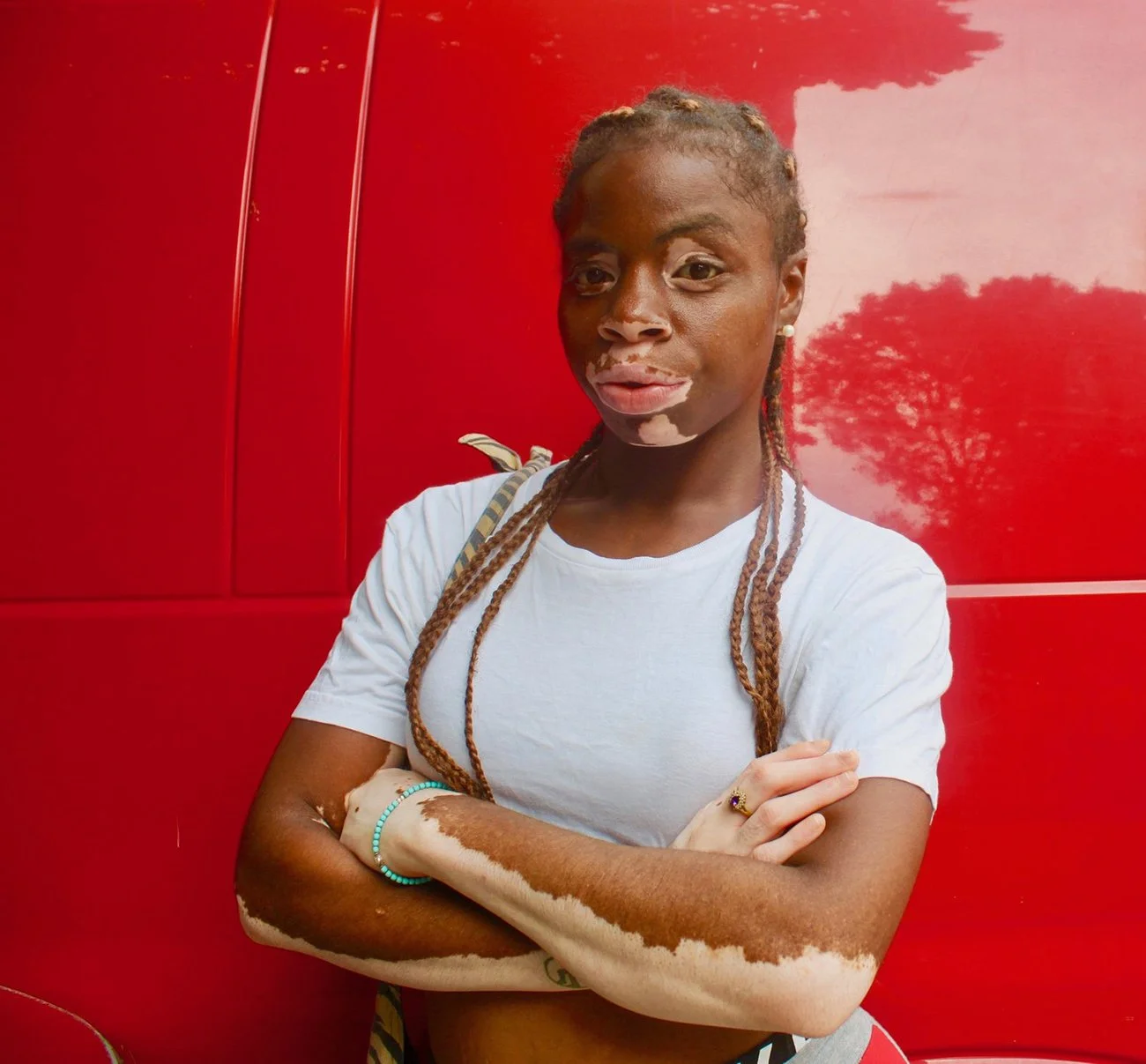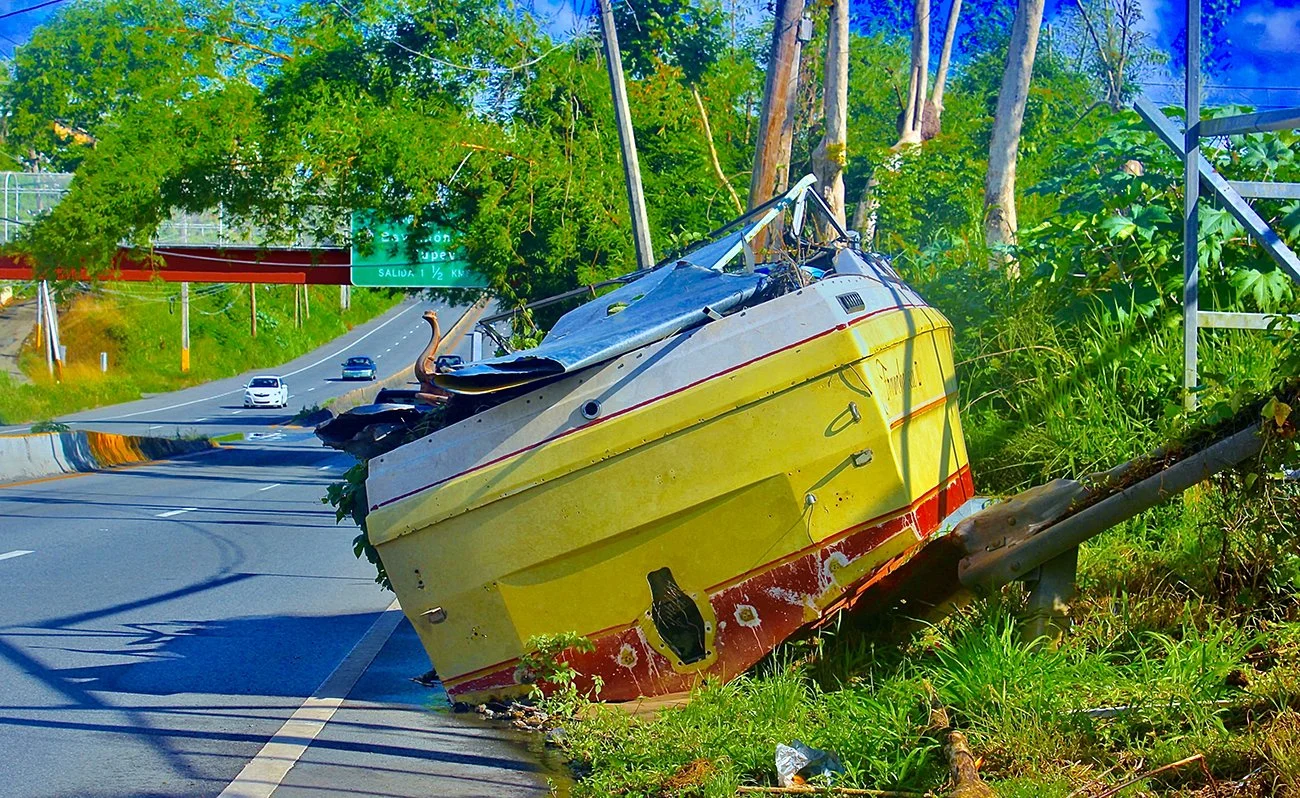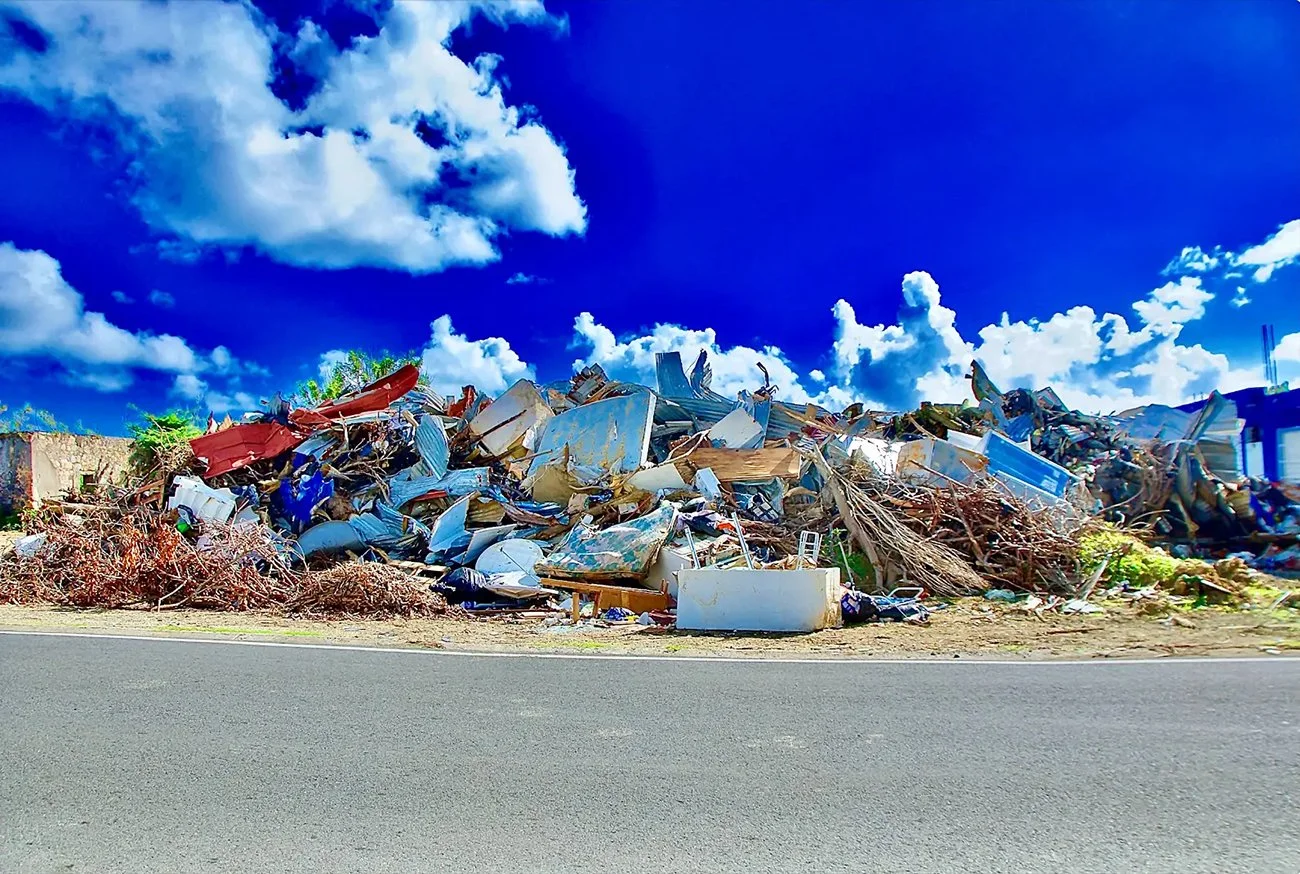“Huracán Architectures” Reveals Fragments and Resilience
The first time I viewed a presentation of Puerto Rican artist Ruben Natal-San Miguel’s work was at Wave Hill in the Bronx, in the summer of 2024. Photographed mostly in Harlem and the Bronx, from Orchard Beach to Gun Hill Road and even down to Coney Island, the “environmental portraits” that he’s known for are raw in their spontaneity and honesty. The images evoke tenderness, as many of the subjects Natal-San Miguel stops on the street are historically pushed to the margins of society: queer, trans, Black, and brown people. They pose just a few seconds for the camera click and go on their way, immortalized in a striking, perfectly composed image that the artist doesn’t edit; the images are already well-saturated with the colors and textures of their hair, skin, and clothing. For less than a New York minute, Natal-San Miguel has captured them as main characters, each presented with dignity. “This is my extended family,” Natal-San Miguel says. “These are my people.” In tandem with making the environmental portraits, it became the artist’s goal to get them into institutional collections. Beyond visibility, one can sense the artist’s demonstration of care and love for his community.
Natal-San Miguel presented another kind of environmental portrait this year in a solo exhibition, Huracán Architectures at NYU’s Hemispheric Institute, curated by Lisa Paravisini-Gebert. Across the fifth floor of 20 Cooper Square, the show is made up of forty images.
The presentation is part of a greater initiative, Hurricane Worlds, led by Hemispheric Institute Director Ana Dopico, which seeks to document ways of life, knowledge, and resilience in hurricane-affected regions. Huracán Architectures is its latest installation, fittingly featuring Natal-San Miguel, a trained architect, who captures what remains of Hurricane Maria’s destruction in a still-ongoing series, Paradise Ruined. NYU is the first to present a large selection from the series, which consists of over 10,000 photographs.
At a glance, one might not notice the ruins that permeate these brightly saturated photos of paradise. Experiencing them in person is striking: the images are simultaneously stunning and unsettling. After a moment, it becomes clear that these are documentations of homes, communities, and landscapes irrevocably changed. After Hurricane Maria struck on September 20, 2017, Natal-San Miguel couldn’t reach his family for over thirty-five days. When he finally did, he was offered the opportunity to travel and create work on the island through a Magnum Foundation nomination—forty-five days after the hurricane, Paradise Ruined began.
Over the next month and a half, he split his time between caring for his mother, attending to their damaged home, and photographing devastated areas. Staying with different family members as he moved around the island, he recalls days without water or Wi-Fi, and going without a shower while working. Though people are central to much of his photography, he intentionally focused on architecture out of respect for the people at that time. His attention to vernacular buildings in the wake of such destruction required an immense sensitivity, care, and effort—as he notes, “it took so much out of [him]” to create something beautiful from the disaster.
Natal-San Miguel has revisited every single one of these structures and locations since 2017, many of them remaining unchanged. An image that stuck with me over the months since the show’s opening, Boat (2019), documents a boat washed up on the side of a road in Guaynabo. Large and hulking in the frame, it sits tilted on the highway, wrecked, with no water in sight—one can only imagine how far the hurricane carried it to its final, inconvenient resting place. “It’s still there,” Natal-San Miguel remarked. “I’ve been back several times. It just sits there. No one moves it.”
An image taken in La Perla, Home Ruins (2017) depicts a single wall left standing against the sea, as bare as a skeleton. All of its former characteristics, gutted; its color of raw bone more apparent against its surroundings of deep blues of the Atlantic. Also in La Perla, a nearby image, Home Ruins (2019), features a rusty refrigerator as one of the few remaining items in a former home crusted with wear against the backdrop of a pristine shoreline. Notably, “La Perla is one of the poorest and most marginalized areas in Puerto Rico,” Natal-San Miguel shared.
In aptly-titled Home Ruins Pile Up (2017), a former house becomes a crumbled pile of debris with merely a few recognizable objects mixed in: a mattress, satellite dish, racks, and furniture. From Natal-San Miguel’s lens, this tall, hulking mass of earth and crushed life meets a puffy cloud in the sky, as if a quiet offering to the heavens. Horrible, yet beautifully composed, it’s hard to look away.
Why are we drawn to ruins? Spending time with Natal-San Miguel’s work, I think of Pompeii, or the temples of ancient Mayan civilizations I visited as a tourist—tragic fragments feigning as major sites of attraction. Natal-San Miguel’s Paradise Ruined series transforms catastrophic aftermath into monument. The artist told me that revisiting this archive of thousands of images can be traumatic. As viewers, we are invited not only to look, but to reflect: the land has begun to recover, but how do communities heal when the physical and emotional landscape is fractured?
From the streets of New York to the remnants of Hurricane Maria, Natal-San Miguel’s undeniable eye in both photography and curation captures lives and landscapes often overlooked, revealing their fragility and endurance. His imagery is a testament to how art uplifts and sustains communities. Beyond documentation, they demand attention and prompt viewers to notice what remains as well as reckon with what has been lost. Natal-San Miguel preserves cultural stories and amplifies voices historically underrepresented in the art world. His work reminds us to look, remember, and bear witness, offering a powerful model for how art can sustain cultural memory and imagine regeneration. Standing before these works, we are drawn into a dialogue between place and people, feeling the weight of history alongside the possibility of care.
Ruben Natal-San Miguel: Huracán Architectures is on view at The Hemispheric Institute at New York University through November 1, 2025.
We AmeRícans, a group exhibition curated by Ruben Natal-San Miguel, is on view at Claire Oliver Gallery from November 5, 2025, through January 3, 2026.





